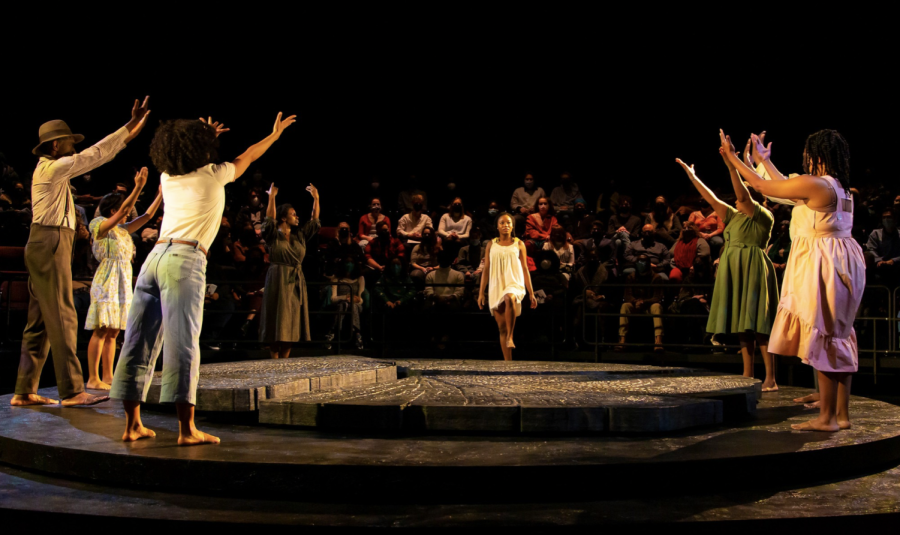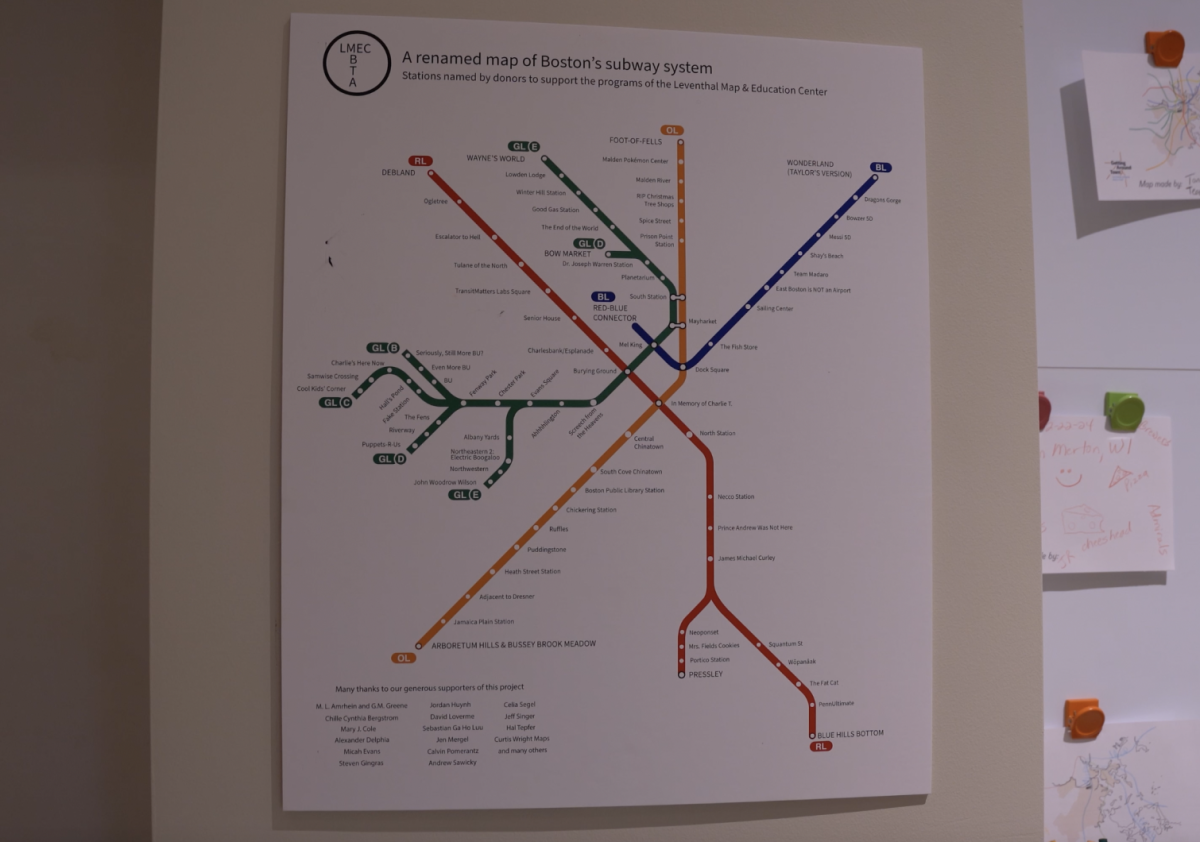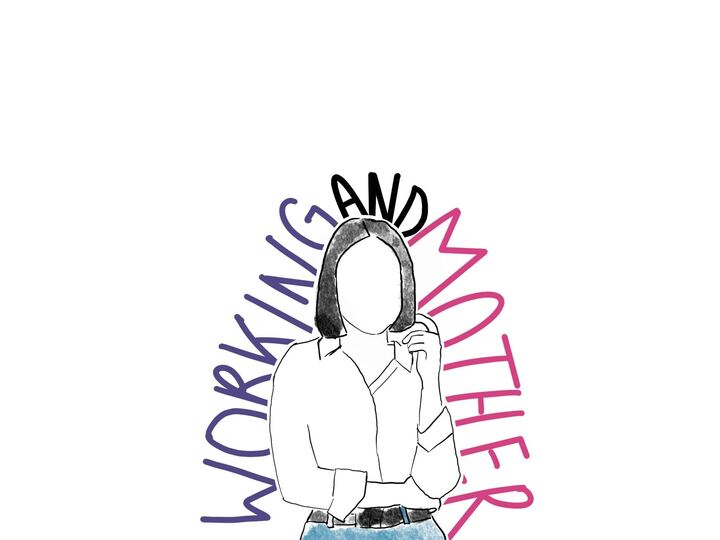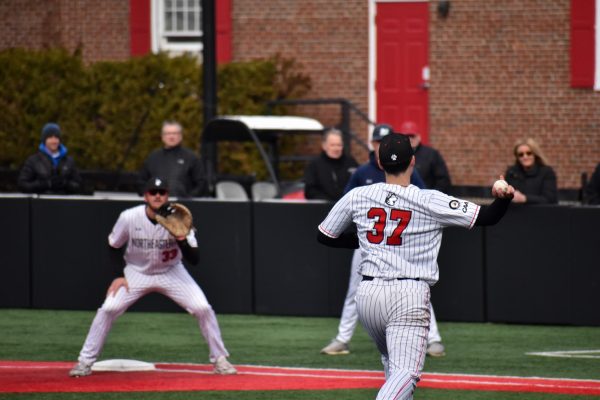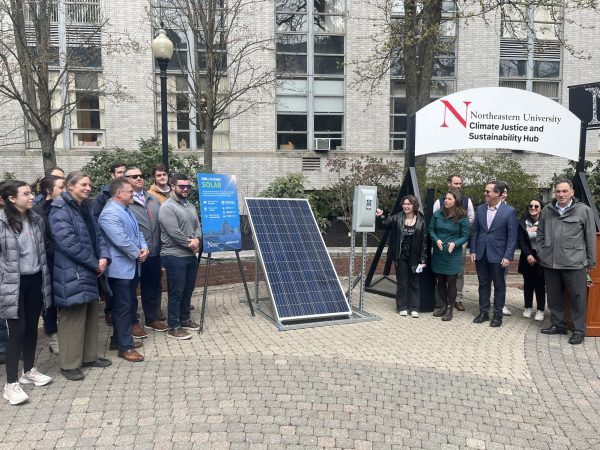‘The Bluest Eye’ production amplifies Black creativity at The Huntington Theatre
Toni Morrison’s evocative and meaningful tale ‘The Bluest Eye’ takes stage at The Huntington. Photo credit to T Charles Erickson courtesy of The Huntington Theatre.
March 8, 2022
More than 50 years after its initial publication, Toni Morrison’s novel “The Bluest Eye” continues to move audiences with its emotional storyline and heavy themes in a theatrical adaptation at The Huntington Theatre.
Adapted by Lydia R. Diamond and directed by Awoye Timpo, the play centers around Pecola, a young Black girl whose greatest desire is to have blue eyes. In telling the story of Pecola and her community in 1941 Lorain, Ohio, this production of “The Bluest Eye” gives Black artists the platform to explore racism, humanity and healing.
Originally slated to be staged in March 2020, the COVID-19 pandemic complicated the production’s journey. Public health protocols forced major delays in the rehearsal process, but the team behind “The Bluest Eye” finally saw its work come to fruition when the show premiered Jan. 28.
Brittany-Laurelle, who plays Claudia, Pecola’s friend and the story’s narrator, said the hiatus allowed the artists to approach the show with newfound appreciation.
“2020 was wild in terms of what we all saw and felt. The idea of what community means had changed,” Brittany-Laurelle said. “By the time all of us got in the room together, there was so much gratitude. We were so open and emotionally available and ready.”
The visual elements of the show were also adjusted to accommodate the two-year delay and a change in the production’s location. “The Bluest Eye” was initially set to be performed at The Huntington’s 264 Huntington Ave. location. However, a major renovation on the historic building meant set designer Jason Ardizzone-West had to alter his plans. Instead, the production takes the stage at the Calderwood Pavilion in the Boston Center for the Arts.
“Both Awoye [Timpo] and I had this realization that we could not pick up the same design and move it to a different space,” Ardizzone-West said. “We dove into the very fundamental question of, ‘What is theatre and how do we gather as artists together?’ Awoye wanted to root the production in West African traditions of storytelling and ritual.”
In keeping with this vision, the team decided to seat audience members in a circle around the performers to emulate traditional West African storytelling. Additionally, “The Bluest Eye” utilizes music to deepen the connection to African culture by incorporating elements like spirituals and ring shouts. Music director David Freeman Coleman explained that these moments of song honor historic Black expression that date back to slavery.
“That kind of music was important during slavery and certainly was important after slavery. It brought communities together but also reminded them of the past, of what they had been through,” he said. “The ring shout was one of the leftover remnants of that culture.”
“The Bluest Eye” at The Huntington is created and performed by mostly Black artists, making it especially meaningful. From the script to the staging to the acting, it is an authentically Black story.
“For the Huntington Theatre to put up a production like this with this much African American creative control says a lot. It’s something to be proud of,” Coleman said. “I want people to walk away knowing that having Black creative control helps us to experience the story on a different level.”
Although Morrison’s novel is set in 1941 and was published in 1970, many of the issues it addresses persist today.
“The themes of the play are still super relevant, the toxic effects of racism that show up in human behavior, that show up in media,” Ardizzone-West said. “What we feed ourselves is important and if what we are feeding ourselves is telling us that we’re ugly, it has a very fundamental effect.”
Audiences will be able to experience Pecola’s story at The Huntington until March 26, either in-person or through a digital recording. Brittany-Laurelle said she hopes those who see the show use its powerful message as motivation to combat systemic racism, especially since ‘The Bluest Eye’ continues to be one of the most banned books in libraries and schools across the United States.
“I would hope that people would be able to see the full humanity of these characters and the generational impact of an anti-Black America,” she said. “When you leave the theater after seeing this show, what I want is for you to take a step back and think, ‘Is there anything I can do to shift this narrative, to dismantle racism in America? What action steps can I take right now?’”


